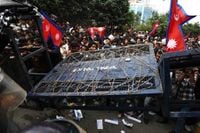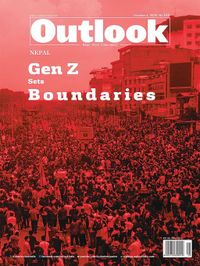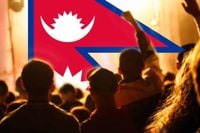On September 8, 2025, the streets of Nepal erupted with a force few could have anticipated. Thousands of young people—mostly members of Generation Z—rose up in protest against what they saw as a corrupt and unresponsive government. Their movement, sparked by a controversial social media ban, quickly escalated into a full-blown revolution that toppled the administration of Prime Minister KP Sharma Oli just a day later. The events that followed have left the country reeling, mourning, and pondering the path ahead.
The initial spark was the government’s decision on September 4 to ban 26 social media platforms. Ostensibly a move to curb online dissent, the ban left only five platforms accessible: Viber, TikTok, Nimbuzz, WeTalk, and Popo Live. According to AFP and independent Nepali journalists, this draconian measure only fueled the outrage of young activists, who accused the government of trying to silence criticism. Content creators reported that TikTok and others actively suppressed anti-government messages. Undeterred, protesters used VPNs and alternative channels to organize, amplifying the movement far beyond what the authorities could control.
By September 8, the protests had become impossible to ignore. As reported by CrimethInc. and corroborated by local sources, police responded with brutal force, firing live rounds into crowds of demonstrators—many of them students still in their school uniforms. The violence resulted in what has been described as the single highest death toll in a day for protests in Nepal’s history. The official tally stands at 74 dead, including three police officers and about 10 incarcerated individuals, though other reports cite 72 fatalities. The images of young people falling under police fire shocked the nation and the world.
As the sun rose on September 9, the anger and grief of the people transformed into direct action. Protesters targeted symbols of state power and economic privilege: the parliament, government buildings, the reserve bank, and the supreme court all came under siege. The homes and businesses of political and business elites were not spared. The Choudhary Group, NCELL, and the Bhatbhateni supermarket chain suffered significant damage—12 of 24 Bhatbhateni outlets were destroyed. These actions, as described by independent journalist Ira Regmi, were not random. They were a direct response to years of perceived exploitation and corruption, with business tycoons accused of tax evasion, fraudulent land deals, and cozy relationships with political leaders.
“The campaign reflected a broader frustration with the status quo,” wrote Pranay Rana in Kalam Weekly. Scandals involving the fraudulent registration of citizens as refugees, irregularities in public contracts, and the systematic transfer of public lands to private hands had eroded public trust. Electricity distribution scandals, where businesses received uninterrupted power while ordinary citizens faced up to 18 hours of daily outages, only deepened the sense of injustice.
KP Sharma Oli’s administration, already criticized for its authoritarian tendencies, quickly lost its grip. On September 9, Oli resigned as prime minister. The next day, Sushila Karki, a former chief justice, was appointed interim prime minister. Her appointment, as reported by AFP, was the result of an unprecedented experiment in direct democracy: over 120,000 Nepali youth mobilized via Discord to select a candidate. This digital revolution marked a radical departure from the old ways of doing politics in Nepal, bypassing the traditional party structures and empowering young voices.
Karki wasted no time. She declared the fallen protesters “martyrs” and organized a national cremation ceremony to honor them. September 17 was proclaimed a day of national mourning, a solemn recognition of the sacrifices made. Yet for many, these gestures were not enough. As Regmi noted, “the public has made it clear that commemorations alone are insufficient and further accountability for state violence remains non-negotiable.”
To that end, Karki established a commission to investigate the violence. On September 28, the commission recommended a travel ban on Oli, former Home Minister Ramesh Lekhak, former National Investigation Department chief Hutaraj Thapa, and two bureaucrats. The ban, which took effect immediately, prevents these figures from leaving the Kathmandu valley without permission. “They may need to appear for investigation at any time,” said commission member Bigyan Raj Sharma, as quoted by AFP. Home Minister Om Prakash Aryal confirmed, “The restrictions are already in effect.”
The political crisis exposed deep fractures in Nepal’s constitutional order. Legal scholars and activists debated whether the constitution, crafted in the aftermath of the monarchy’s abolition in 2006, could accommodate such a dramatic transfer of power. The old guard argued for strict adherence to parliamentary procedures, but the youth-led movement insisted that the will of the people must prevail—even if it meant temporarily suspending certain constitutional provisions. Advocate Ojjaswi Bhattarai and others argued that “the constitution exists to serve the people, not to trap them in a corrupt system.”
This revolutionary legal thinking found fertile ground among the digitally savvy youth. Town halls, both digital and in-person, became spaces for debate and planning. New groups emerged, determined to articulate a formal revolutionary mandate and establish institutions that would hold future leaders accountable. Anarchist collectives and intersectional activists pushed the movement to address not just corruption, but also the underlying injustices of caste, class, and gender.
Yet the revolution was not without its critics. Some liberals and older generations decried the destruction of property, arguing that it undermined the legitimacy of the movement. Others worried that the digital nature of the uprising excluded those without access to technology, particularly in rural areas. The mainstream media, for their part, struggled to keep up, often failing to grasp the significance of platforms like Discord in shaping the new political landscape.
As the country looks ahead to parliamentary elections scheduled for March 5, 2026, the stakes could hardly be higher. The caretaker government faces the daunting task of restoring order, delivering justice for the victims, and rebuilding trust in public institutions. Meanwhile, the revolutionary energy that swept through Nepal in September shows no sign of dissipating. The challenge now is to channel that energy into lasting change—without losing sight of the ideals that brought a generation into the streets.
For Nepal, the events of September 2025 will be remembered not just as a time of turmoil and tragedy, but as a turning point—a moment when the voices of the young forced a nation to confront its past and imagine a different future.



